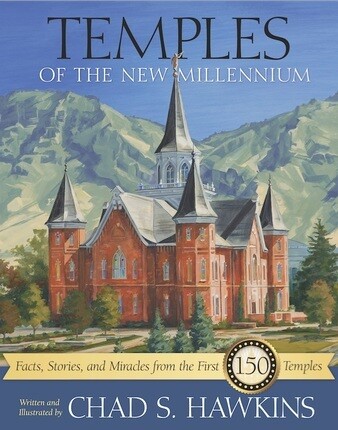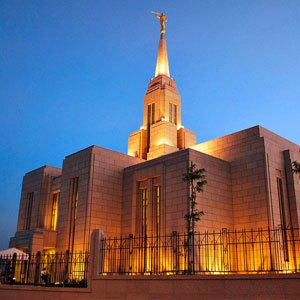On April 24, 2005, President Gordon B. Hinckley addressed over 100,000 members in 27 stakes on the islands of the southern Philippines. In a live broadcast originating from Salt Lake City, he spoke of the Church’s progress and the requirements to have a temple built in the Cebu City area. After acknowledging their desire for another temple, President Hinckley challenged all the adult members to qualify for a temple recommend. Then he said, “If enough of you can do this, we shall be obliged to build another temple in the Philippines more convenient to where you live.”
Less than a year later, the First Presidency announced construction of a new temple in Cebu City by a letter to priesthood leaders dated April 18, 2006. The announcement stated, “We are confident this will be a blessing to the many faithful Saints in this and surrounding areas who have had to travel long distances to enjoy the blessings of the temple.”
“The news of the announcement of the new temple to be built in the Cebu Island spread like wildfire throughout the Visayan Islands and in Mindanao,” said President Ray W. Nelson, the Manila Philippines Temple president. “This has become an answer to the prayers of the Saints." . . .
Twenty-three years after the dedication of the temple in Manila, ground was broken for the nation’s second temple. Elder Dallin H. Oaks broke ground for the temple complex on November 14, 2007. The 11.6-acre complex includes a temple, patron housing, a meetinghouse, homes for the temple and mission presidents, and a mission office. Some 400 members and local community leaders gathered for this historical event. During the event, Cebu City Mayor Tomas Osmeña remarked: “It is with great honor that I am here to witness the groundbreaking of what is to be the place for a beautiful temple.” The mayor shared the history of the property and explained that the site was used to defend freedom and that treasures were rumored to be buried there.
Although no “treasures” were found, Mayor Osmeña’s comments proved to be very true. The temple is located on higher ground in Cebu City. When the Japanese invaded the Philippines during World War II, they occupied the area and fortified it as a stronghold. During the occupation, the Japanese built a labyrinth of underground tunnels to facilitate movement and the storage of ammunition and explosives. These twenty-foot-deep tunnels were discovered while excavating the temple’s foundation in front of the main entrance. Ultrasound equipment was used and care was given to determine the extent of the tunnels and remove equipment and unexploded bombs. Soil was stabilized by filling the tunnels with at least twenty-eight truckloads of concrete. . . .
Several of those involved with the construction were converted and baptized during the building of the Lord’s house in Cebu City. Among them was project manager Knut Klavenes. Philippines Cebu City Mission President D. Parke Hansen related the experience of presenting Knut with a Book of Mormon: “One day we were driving together in the city and I had the impression that I should give him a Book of Mormon. I told him that I thought he was ready for exposure to the Book of Mormon. His comment to me was, ‘I think you are right. I think I am ready.’ Knut was soon baptized and President Hansen confirmed him a member.
Describing his conversion experience, Knut said, “My biggest moment was in the sealing room. I came back from Manila, where I had been inspecting furniture, on a Friday evening. It was quite late, but I thought ‘I’ll just go by the temple to make sure everything is OK.’ I went inside the sealing room, and as soon as I went in, I could tell the Spirit was there. It was very, very strong. As soon as I walked in, I just wanted to cry. It was the nicest feeling. I was there for about 10 or 15 minutes, crying like a little baby.”
President Thomas S. Monson dedicated the second temple in the Philippines in three sessions on June 13, 2010. At the time of dedication, the temple served some 200,000 members living in the Visayas and Mindanao island groups in the southern part of the Philippines.
Lead image from ldschurchtemples.com
For more fascinating temple facts and stories, check out Temples of the New Millennium: Facts, Stories, and Miracles from the First 150 Temples.
Artist and author Chad Hawkins has devoted a lifetime to sharing the sermons that temples teach. Commemorating the landmark occasion of the dedication of the 150th operating temple of The Church of Jesus Christ of Latter-day Saints, Temples of the New Millennium brings together little-known facts and compelling true stories of the faith and miracles behind 150 latter-day houses of the Lord. In telling the story of each temple through the words and experiences of those who built it, this beautiful keepsake volume will give your family an even greater appreciation for the marvelous work that the Lord is directing on both sides of the veil.
Each temple is a labor of love, faith, and sacrifice. Find out why President Gordon B. Hinckley proclaimed this "the greatest era of temple building ever witnessed" as you come to know and love each house of the Lord better than ever before with Temples of the New Millennium.




